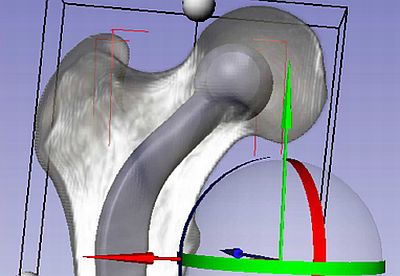
Simpleware: Converting 3D Images into Computational Models
Harman David - Simpleware (United Kingdom)

PRESENTATION
Abstract
There has been increasing interest in the visualisation and analysis of 3D image data such as CT, micro/nanoCT, MRI, and Microscopy, and the ability to accurately convert the data into computer models used for CAD, Rapid Prototyping, Finite Element and CFD simulation. Novel methods of generating these models directly and robustly from the image data have been developed by the authors. The paper will present algorithms and techniques which can be applied to 3D imaging data, and will discuss specific issues to image-based meshing, in particular tools for improving the interface with CAD, FEA and CFD. A number of real-life examples that cover different applications within Computational Mechanics applications (e.g. soils, materials, 'as built' parts, and human anatomy) will be presented. Methods. The mesh generation technique presented by the authors works directly on the image data, exhibiting sub-voxel accuracy and taking into account partial volume effects. The technique is also topology and volume preserving, avoiding loss or gain of volume. In addition, multi-part meshes consist of matching nodes and elements which eliminate the need for contact constraints. A proprietary technique has been developed which allows the setting of different density zones throughout the model. This allows the overall number of elements required to capture a given geometry to be reduced while allowing an increase in the mesh density around areas of greater interest. Micro-architectures can be generated to conform to an existing domain. Control of the domain's mechanical properties is achieved using a re-iso-surfacing technique allowing density variations throughout the architecture and micro-architectures with specific porosities to be generated. The concept of a relative density map to represent the desired relative densities in the micro-architecture where the minimum and maximum porosity values can be specified is introduced. A new homogenisation algorithm allows computing orthotropic mechanical properties from higher resolution scans. This enhances the value of the information obtained at micro level, enabling it to be used for macro models on desktop computers. Conclusion The ability to automatically convert any 3D image dataset into high quality meshes is becoming the new modus operandi for computational analysis. New tools for image-based modelling have been demonstrated, improving the ease of generating meshes for computational mechanics (CAD, FEA and CFD) and opening up new areas of research.
